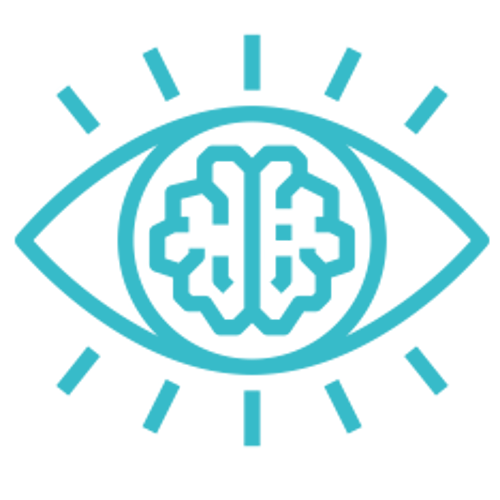In a world filled with various distractions and rapidly changing stimuli, there are instances when the human mind becomes deeply engrossed in a particular subject or activity, displaying an intense and unwavering focus. This phenomenon, referred to as “hyperfixation,” has piqued the interest of psychologists, neuroscientists, and individuals alike. Throughout this blog post, we will explore the intricacies of hyperfixation, unveiling its meaning, origins, and implications.
Understanding Hyperfixation
What is hyperfixation? Hyperfixation can be defined as an overpowering and enduring preoccupation with a specific subject, activity, or interest. Unlike regular interests that might fluctuate, hyperfixations seize a person’s attention for an extended period, often to the exclusion of other matters. This phenomenon frequently links to conditions such as Attention Deficit Hyperactivity Disorder (ADHD), autism spectrum disorder, and other neurological conditions.
Characteristics of Hyperfixation
Intense Focus:
Hyperfixation is characterized by an exceptional level of concentration and attention on a specific subject or activity. Individuals experiencing hyperfixation often find themselves completely absorbed in their chosen interest, to the point where they may lose track of time and become oblivious to their surroundings.
Time Distortion:
One of the striking features of hyperfixation is its ability to distort the perception of time. Hours can pass by in what feels like minutes when someone is immersed in their hyper focused state. This time distortion is a result of the brain’s heightened engagement and focus on the chosen topic. Hyperfixation causes time to feel distorted, which can affect daily life.
Limited Attention Shift:
People undergoing hyperfixation may encounter challenges when attempting to shift their attention to other tasks or activities. This characteristic can sometimes be frustrating, as it might lead to difficulties in managing responsibilities or participating in conversations that deviate from the hyperfixated interest.
Escapism:
A common hyperfixation characteristic is escapism. Hyperfixation often serves as a form of escapism from stress, anxiety, or the demands of daily life. Engaging deeply with a specific interest can provide a comforting retreat from the pressures of the outside world, allowing individuals to temporarily forget their worries and immerse themselves in something enjoyable and familiar.
Heightened Productivity:
In the midst of hyperfixation, individuals can experience a surge in productivity within their chosen focus area. The intense concentration and enthusiasm often lead to skill improvement, creative output, and the accomplishment of tasks related to the interest. This can result in a sense of achievement and satisfaction.
Selective Permeability:
Hyperfixation can lead to selective permeability of information. The individual becomes highly receptive to information related to their hyper fixated subject while possibly ignoring or disregarding other types of information. This selective processing can contribute to the depth of knowledge acquired within the hyper focused area.
Hyper-Engagement:
Hyper-engagement is characteristic of those with common hyperfixations.Hyperfixation involves more than just interest; it’s marked by a heightened emotional and cognitive engagement. This engagement goes beyond casual curiosity and can lead to an individual developing a deep, emotional connection to their chosen interest.
Resistance to Interruptions:
During periods of hyperfixation, individuals might find it challenging to switch their focus to other matters, even when interrupted. This can be frustrating for those around them and may lead to social or interpersonal difficulties, especially if the hyper fixated interest takes precedence over important obligations.
Difficulty Initiating Change:
Starting or initiating tasks outside the realm of hyperfixation might prove difficult for individuals experiencing this phenomenon. This can be attributed to the brain’s resistance to transitioning from a highly engaging activity to something less stimulating.
Elevated Sensory Perception:
Hyperfixation can sometimes lead to heightened sensory perceptions related to the chosen interest. For example, a person hyperfocused on a musical instrument might become acutely attuned to nuances in sound, while someone engrossed in visual art might notice intricate details in visual stimuli.
Hyperfixation Causes
Neurological Wiring:
The brain’s structure and function play a significant role in the development of hyperfixation. Variations in neural circuitry can lead to heightened focus and attention on specific subjects. Certain regions of the brain responsible for processing information and regulating attention might function differently in individuals prone to hyperfixation.
Neurodiversity:
Hyperfixation is often observed in individuals with neurodiverse conditions such as Attention Deficit Hyperactivity Disorder (ADHD), autism spectrum disorder (ASD), and sensory processing disorders. These conditions are associated with atypical cognitive processing and sensory experiences, which can contribute to the intense and prolonged focus seen in hyperfixation.
Stimulus Appeal:
The sensory appeal of a particular subject or activity can trigger hyperfixation. Stimulating and engaging experiences can captivate the individual’s attention, leading to a deep immersion in the subject. For instance, the vivid colors and dynamic movements in visual art or the intricate patterns of a complex puzzle can be highly stimulating.
Emotional Resonance:
Personal experiences, emotions, and memories can create a strong emotional connection to a specific interest. This emotional resonance can enhance the individual’s desire to engage deeply with the subject, making it more likely for hyperfixation to occur. This emotional connection might also serve as a coping mechanism for dealing with stress or emotional challenges.
Compensatory Mechanisms:
For individuals with certain neurological conditions, hyperfixation can serve as a compensatory mechanism. It might help them manage sensory overload, anxiety, or difficulties with shifting attention. Engaging in a hyper fixated interest can provide a structured and predictable environment, offering comfort and stability.
Novelty and Complexity:
Hyperfixation often arises when the subject or activity offers a sense of novelty or complexity. The brain is drawn to novelty, and engaging with complex tasks can be inherently rewarding. The challenge and intrigue presented by such activities can stimulate intense focus and curiosity.
Hormonal and Neurochemical Factors:
Hyperfixation causes vary, with many having biological roots. Certain hormonal and neurochemical factors can influence hyperfixation. Dopamine, a neurotransmitter associated with pleasure and reward, might play a role in sustaining the intense focus seen in hyperfixation. Fluctuations in dopamine levels or receptor sensitivity could contribute to the phenomenon.
Cognitive Patterns and Habits:
Individuals who develop cognitive patterns of intense focus or have a history of engaging deeply with certain subjects might be more prone to hyperfixation. This could be influenced by early childhood experiences, education, and the reinforcement of certain cognitive habits over time.
Perseveration Tendencies:
Perseveration, which is the repetition of a behavior, response, or activity beyond what is considered typical or necessary, can underlie hyperfixation. It’s seen in conditions like autism and can lead to obsessive focus on specific topics or actions.
Common Hyperfixations
What are common hyperfixations? Hyperfixation can manifest across a wide range of interests, and it’s important to note that what becomes a hyperfixation can vary greatly from person to person if it captures a person’s intense focus and attention. Hyperfixations can be a source of joy, skill development, and self-expression. However, it’s important to maintain a balance and ensure that hyperfixation doesn’t negatively impact other important areas of life.Here are some examples of common hyperfixations:
Specific Hobbies or Activities:
- Gaming: Some individuals might become hyper focused on video games, spending hours immersed in virtual worlds, completing quests, and improving their skills.
- Collecting: Collecting items like stamps, coins, action figures, or trading cards can become a hyperfixation, with individuals dedicating substantial time and resources to expanding their collection.
- Crafting: Activities like knitting, painting, or woodworking can lead to hyperfixation, where individuals focus on creating intricate and detailed projects.
Creative Pursuits:
- Writing: Certain individuals might become hyperfocused on writing, whether it’s fiction, poetry, or journaling, pouring their thoughts and ideas onto paper.
- Music: Hyperfixation on playing a musical instrument, composing music, or exploring various genres can lead to hours of dedicated practice and exploration.
Niche Interests:
- Fandoms: Some individuals become deeply engrossed in fandoms related to TV shows, movies, books, or comic series. They might engage in fanfiction, fan art, and discussions about the source material. Fandom interests can lead to the common hyperfixations of creative pursuits, collecting, and crafting.
- Specific Historical Periods: Hyperfixation on a particular historical era, such as the Victorian era or Ancient Greece, can lead to in-depth research, reading, and even crafting period-authentic items.
Academic Subjects:
- Mathematics: Some individuals experience hyperfixation on solving complex mathematical problems, exploring new theories, or unraveling mathematical mysteries.
- Science: Hyperfixation on scientific topics like astronomy, biology, or physics can lead to extensive research, experimentation, and knowledge acquisition.
Technology and Computers:
- Programming: Hyperfixation on coding and programming languages can lead to the creation of complex software projects and a deep understanding of algorithms.
- Computer Graphics: Some individuals might become hyperfocused on digital art, graphic design, or 3D modeling, creating intricate visual works.
Specific Subjects within Pop Culture:
- Movies: A hyperfixation on a specific movie franchise or filmmaker can lead to in-depth analysis, discussions, and repeated viewings.
- TV Shows: Binge-watching TV shows and analyzing plot intricacies, character development, and fan theories can result in hyperfixation.
Health and Fitness:
- Fitness Regimens: Hyperfixation on exercise routines, dietary plans, or fitness goals can lead to meticulous tracking, research, and dedication to personal health.
- Nutrition: Some individuals might become hyperfocused on researching nutrition, experimenting with diets, and studying the effects of different foods on the body.
Animals and Nature:
- Specific Animals: Hyperfixation on a particular animal species, breed, or type can lead to extensive research, involvement in conservation efforts, and even adopting or caring for those animals.
- Plant Care: Hyperfixation on gardening, plant care, and cultivating specific types of plants can result in in-depth knowledge of botany and horticulture.
Overcome hyperfixation with a New York psychotherapist today!
If you find yourself entrapped in the cycle of hyperfixation, where your thoughts and attention are excessively focused on a single topic, it’s time to seek guidance from a skilled New York psychotherapist. Don’t let your passions and interests morph into overwhelming obsessions that hinder your daily life and turn into hyperfixation anxiety. We have New York psychotherapists at Uncover Mental Health Counseling that can help gain valuable insights into the root causes of your hyperfixation and learn effective strategies to regain balance and control. Follow these steps to get started:
- Reach out to Uncover Mental Health Counseling to arrange a complimentary 15 min consultation call.
- Meet with a New York psychotherapist for your initial session.
Begin receiving the necessary skills to break free from the constraints of hyperfixation.






































